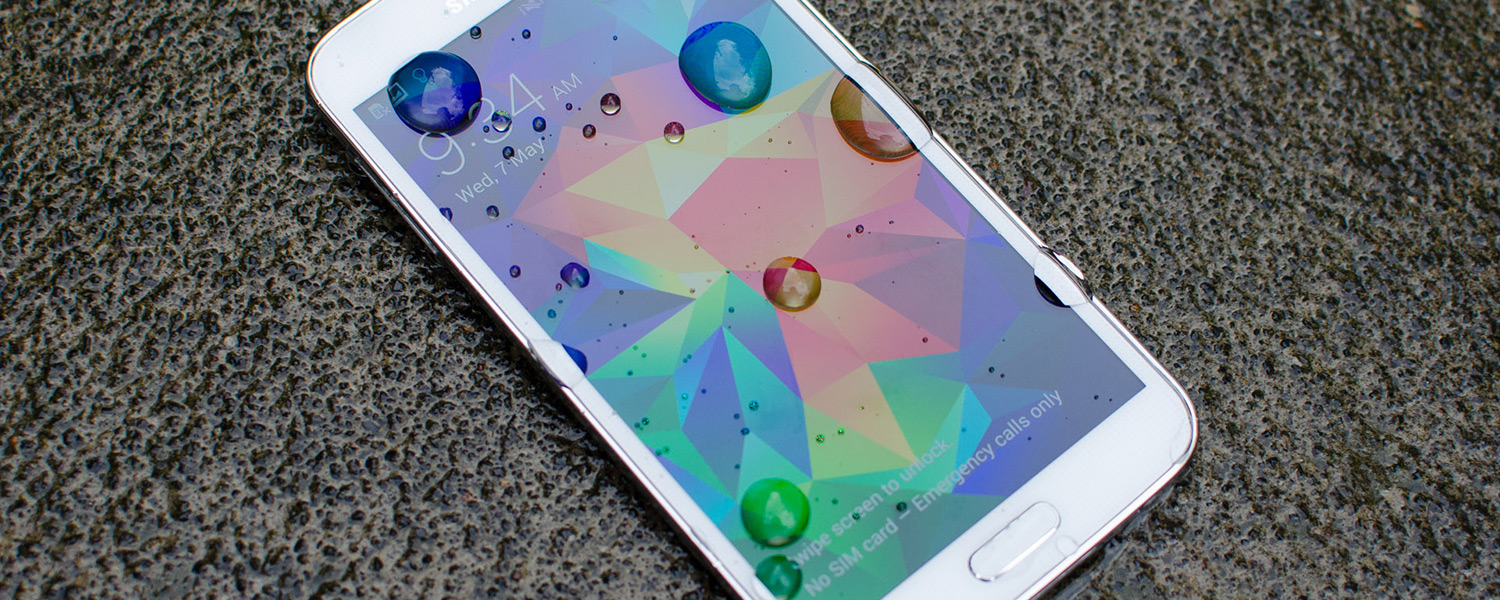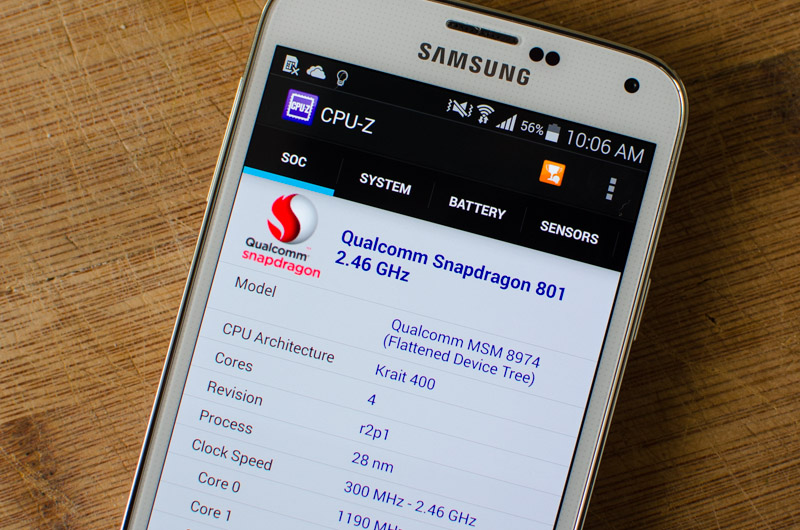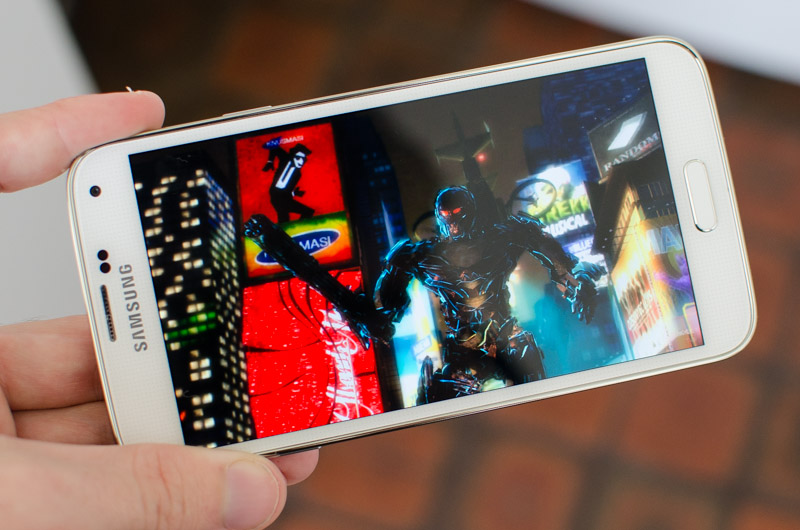Performance: Snapdragon 801 Power
The main variant of the Samsung Galaxy S5 is powered by a Qualcomm Snapdragon 801 SoC, specifically the MSM8974AC with a quad-core Krait 400 CPU clocked at 2.45 GHz, an Adreno 300 GPU at 578 MHz, a Hexagon QDSP6V5A DSP at 600 MHz, and a 32-bit dual-channel LPDDR3 memory controller. This is essentially the same SoC as found in the Asian variant of the HTC One M8, so I'm not expecting a major difference in performance between the two devices.
The Snapdragon 801 is paired with 2 GB of LPDDR3 RAM, 16 GB or 32 GB of internal NAND, and a microSD card slot. Connectivity-wise there's LTE Category 4 rated at 150 Mbps downstream and 50 Mbps upstream, plus 42 Mbps HSPA+ and quad-band 2G. You'll also find Wi-Fi 802.11 a/b/g/n/ac with 2x2 MIMO, Bluetooth 4.0, NFC, and an infrared LED. Like the Galaxy Note 3, the Galaxy S5 has a USB 3.0 port on the bottom.
The other variant of the Galaxy S5 is one you probably won't be seeing too often, as it lacks LTE networks and isn't destined for North America, Europe or Asia. It comes with a Samsung Exynos 5422 SoC, which is a 2.1 GHz quad-core ARM Cortex-A15 CPU paired with a 1.5 GHz quad-core ARM Cortex-A7 CPU in a big.LITTLE configuration with heterogeneous multi-processing and global task scheduling. The SoC also packs an ARM Mali-T628 GPU clocked at 695 MHz, and a dual-channel LPDDR3e memory controller.
This review focuses on the Snapdragon 801 model (the SM-G900F and others) as it's far more common, but I will deliver an update on how the Exynos model (the SM-G900H) performs when I get hands-on time.
Below you'll find a spec comparison between the two Galaxy S5 variants, and the three main Galaxy S4 variants, including the Snapdragon 800-powered i9506 which was released several months after the original variants.
| Specs | Galaxy S5 G900F | Galaxy S5 G900H | Galaxy S4 i9506 | Galaxy S4 i9505 | Galaxy S4 i9500 |
| Series | Galaxy S5 | Galaxy S4 | |||
| SoC | Snapdragon 801 MSM8974AC | Exynos 5422 | Snapdragon 800 MSM8974 |
Snapdragon 600 APQ8064 |
Exynos 5410 |
| CPU | 4x Krait 400 @ 2.45 GHz | 4x ARM Cortex-A15 @ 2.1 GHz + 4x ARM Cortex-A17 @ 1.5 GHz | 4x Krait 400 @ 2.26 GHz | 4x Krait 300 @ 1.7 GHz | 4x ARM Cortex-A15 @ 1.6 GHz + 4x ARM Cortex-A17 @ 1.2 GHz |
| GPU |
Adreno 330 @ 578 MHz |
ARM Mali-T628 @ 695 MHz |
Adreno 330 @ 450 MHz |
Adreno 320 @ 400 MHz |
PowerVR SGX544MP3 @ 480 MHz |
| Memory |
2 GB dual-channel LPDDR3 @ 933 MHz |
2 GB dual-channel LPDDR3 @ 800 MHz |
2 GB dual-channel LPDDR3 @ 600 MHz |
2 GB dual-channel LPDDR3 @ 800 MHz |
|
| Storage | 16/32 GB internal + microSD | ||||
| Wi-Fi | 802.11 a/b/g/n/ac | ||||
| Bluetooth | 4.0 | ||||
| LTE | Category 4 | None | Category 4 | Category 3 | None |
| Other | NFC, Infrared LED, MHL, GPS, HSPA+, 2G | ||||
| Display | 5.1" 1080p Super AMOLED | 5.0" 1080p Super AMOLED | |||
| Battery | 10.78 Wh (2,800 mAh) | 9.88 Wh (2,600 mAh) | |||
| Camera | 16 MP 1/2.6" sensor with f/2.2 lens | 13 MP 1/3.06" sensor with f/2.2 lens | |||
At times I feel like a broken record talking about the performance of a flagship handset like the Galaxy S5. Basic tasks - including opening and closing applications, multi-tasking, powering on the phone, and using simple applications - are extremely fast to perform on the powerful Snapdragon 801. This is essentially the same story as we've seen from the last generation; lag is a thing of the past on high-end ARM devices.
The power of the Snapdragon 801 does assist with more intense tasks such as web browsing, on-the-fly image editing and processing, as well as gaming. The Adreno 330 GPU is very capable of rendering the latest games at 1080p without much difficulty, although high-end titles like Grand Theft Auto: San Andreas continue to be too intense to run at their maximum graphics settings. This is just one example though, and the majority of games will run without a hitch on the Galaxy S5.
Surprise! The Samsung Galaxy S5 doesn't cheat on benchmarks. That's right, there's no CPU clock speed boosting in certain applications, no aggressive governors, and no GPU speed increases. Massive kudos to Samsung here for getting out of the dodgy cheating game, making these following results more valid.
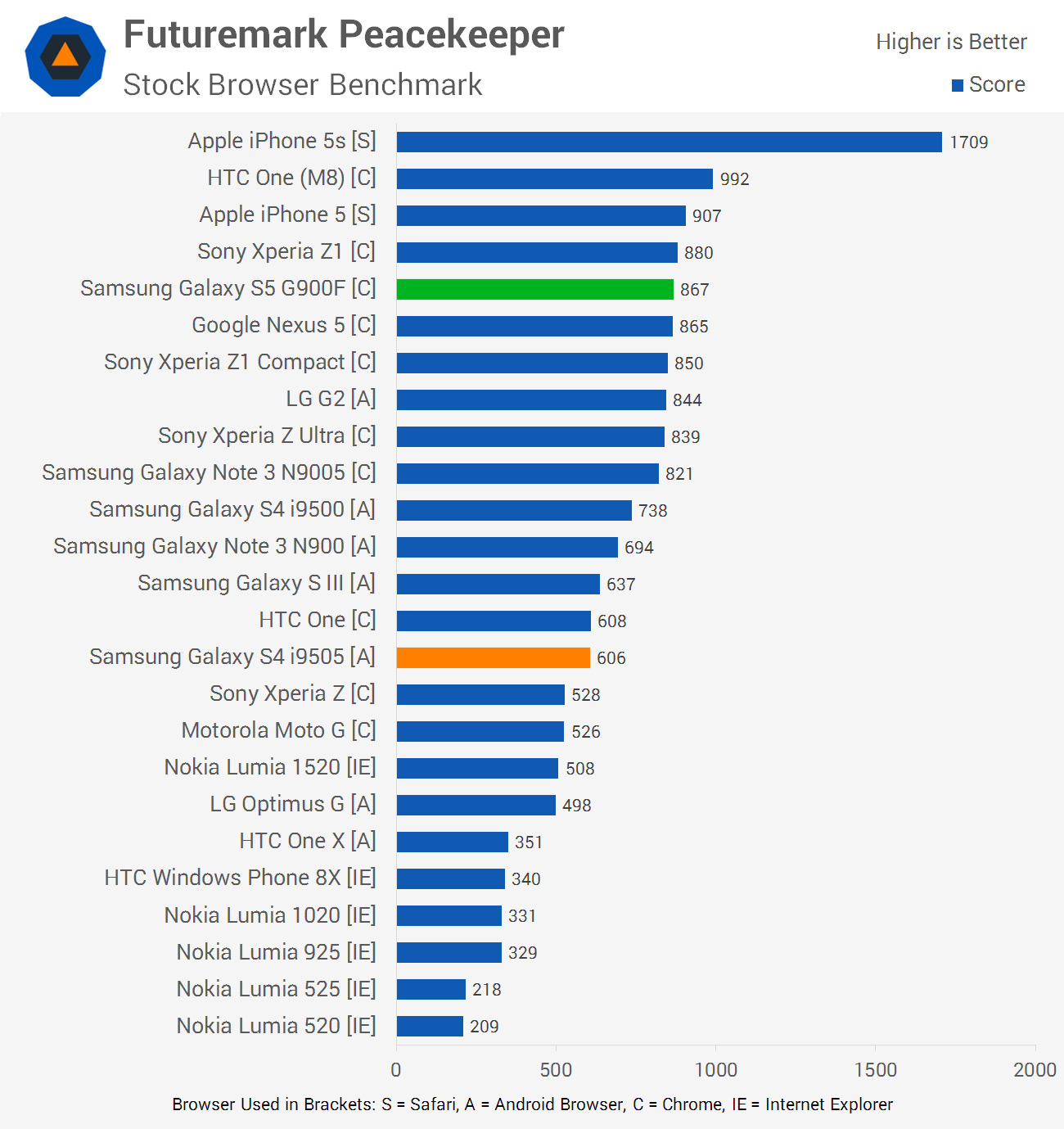

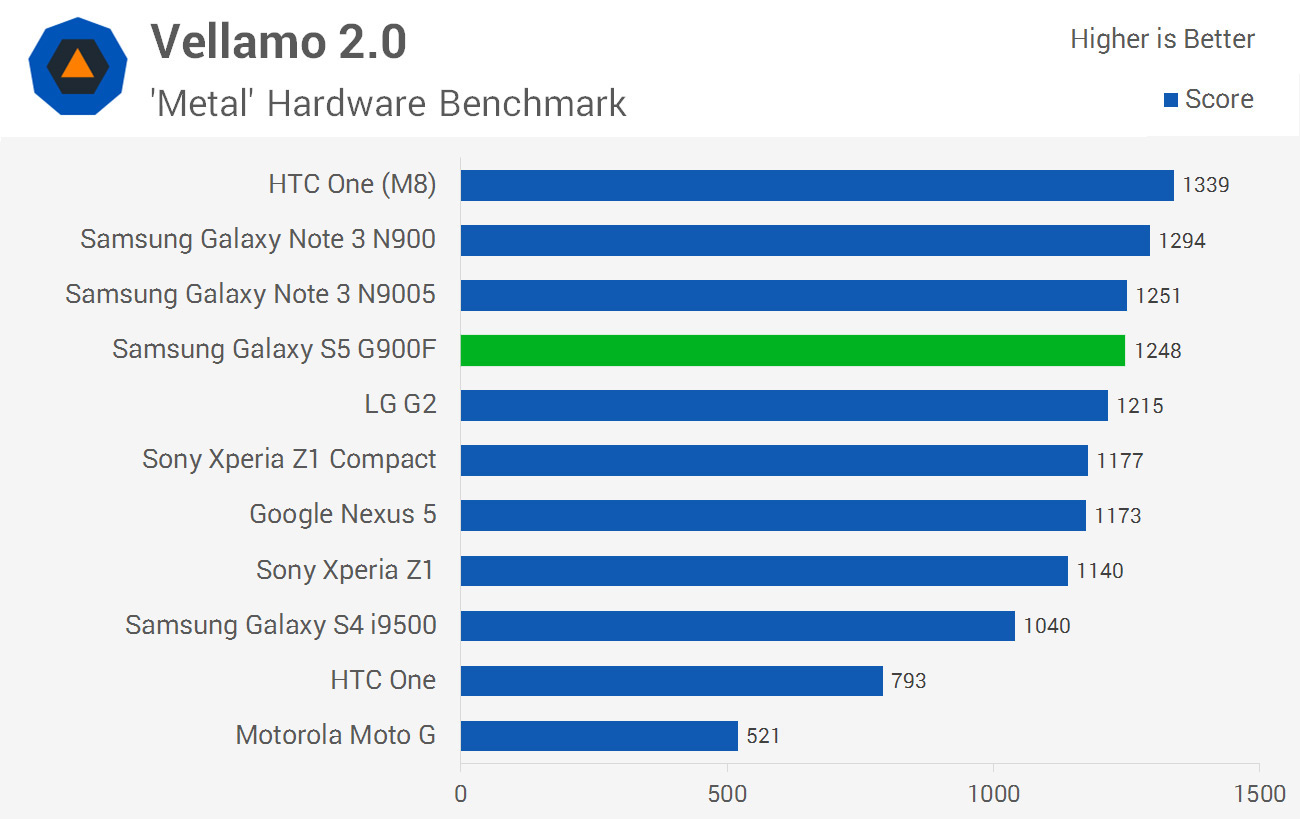
In general performance benchmarks, the Galaxy S5 performs as expected: on-par with the Snapdragon 801-powered HTC One M8, slightly ahead of Snapdragon 800 devices, and nearly twice as fast as Snapdragon 600 devices.


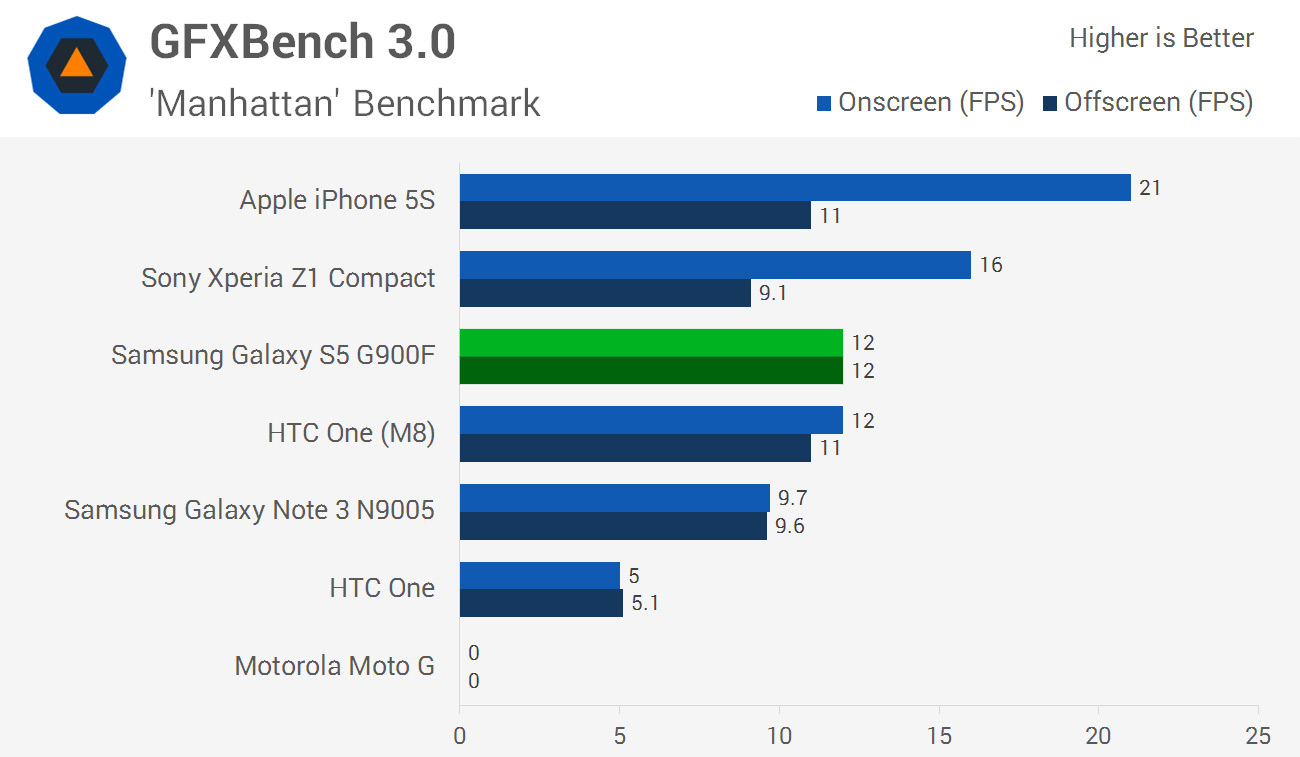
Again, in graphics tests the Galaxy S5 performed as I expected, with a slightly less aggressive governor resulting in lower scores (and likely better battery life). Below you'll find NAND benchmarks, where the S5 performs acceptably too.
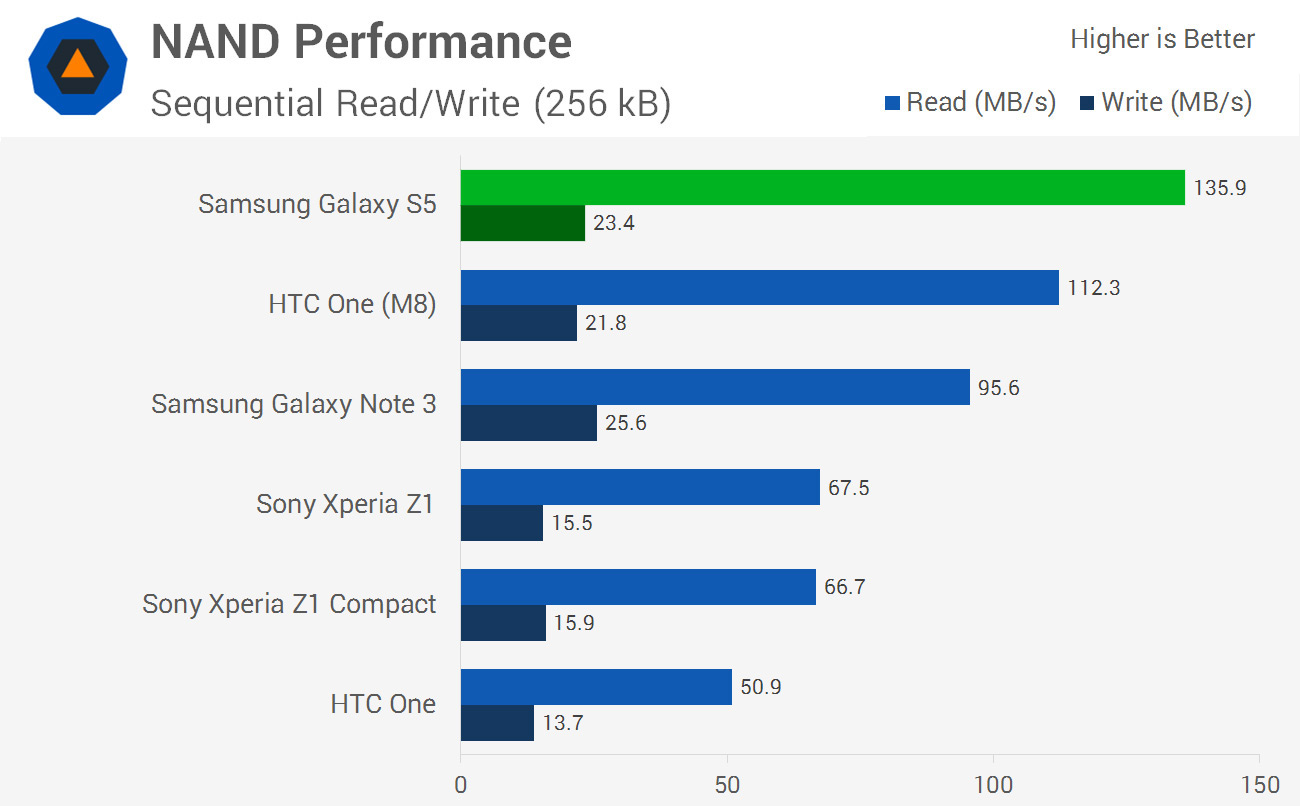
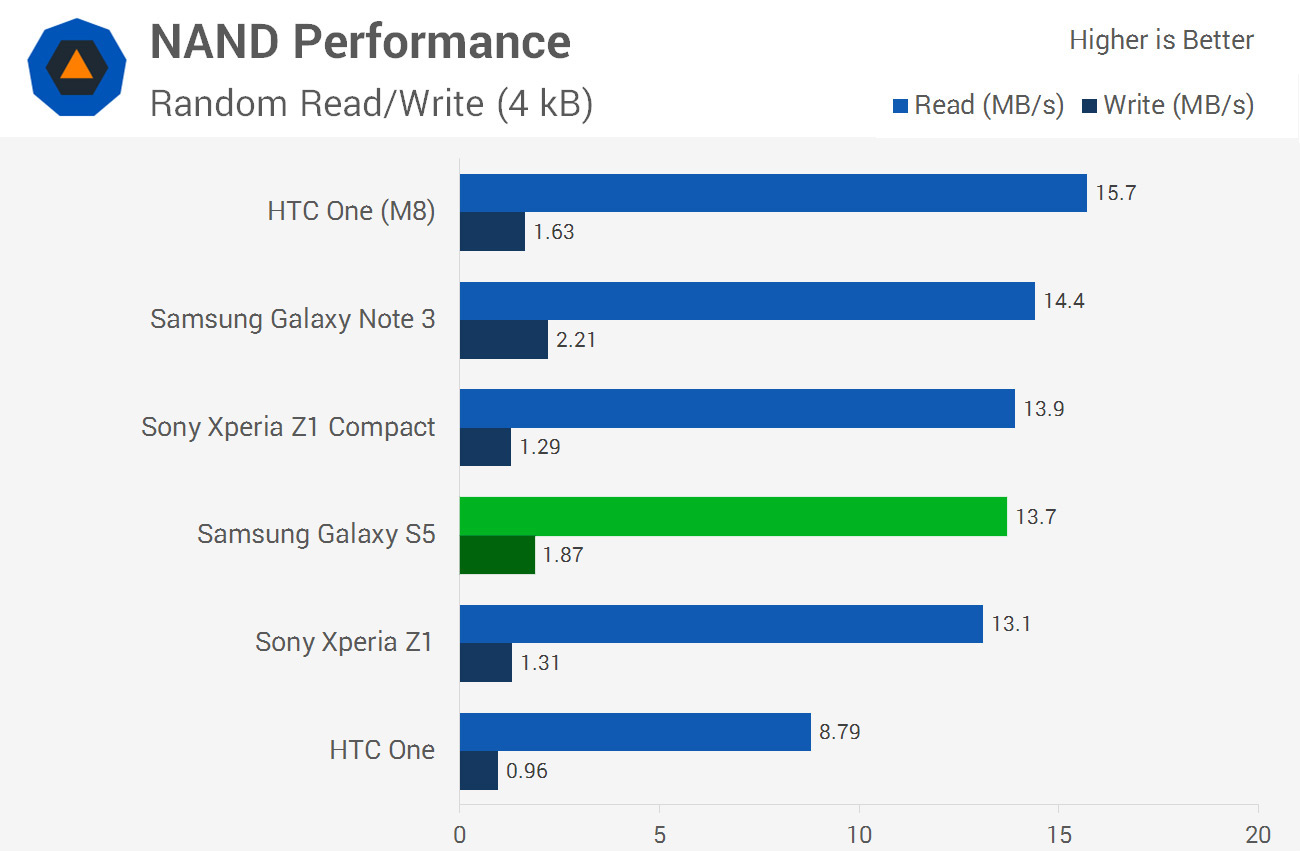
The Galaxy S5 supports Wi-Fi 802.11a/b/g/n/ac with 2x2 MIMO, making it easy to stream content to and from the handset. I had no trouble streaming 1080p content from my home media server over my 5 GHz wireless N network, and obviously you'll get better performance if you have an 802.11ac router. The S5 is also loaded with Bluetooth 4.0, A-GPS+GLONASS and NFC, and all of them work well.
LTE Category 4, supporting downloads of up to 150 Mbps and uploads of 50 Mbps, is included as part of the Snapdragon 801 SoC alongside HSPA+ and 2G bands. On the software front, Samsung has packed in a Download Booster feature, which downloads files over 30 MB in size using both Wi-Fi and LTE. This is a handy feature if you want to speed up large downloads, and seems to work well, although be careful not to go over your data limit on LTE with it enabled.
Storage-wise the Galaxy S5 comes with either 16 GB or 32 GB of internal NAND, complemented by a microSD card slot that can accept cards up to 128 GB in size. In the 16 GB model, around 11 GB is available to use out of the box, so if you want to store a lot of music or videos on the device, you'll probably want to make use of the microSD card slot.

The S5 features a micro-USB 3.0 port behind the bottom cover, which normally facilitates much faster transfers to and from the internal storage. Interestingly, unlike with the Galaxy Note 3, there is barely any performance advantage when using USB 3.0. I'm not quite sure why this is the case, although I did notice there's no USB 3.0 setting to enable, which on the Note 3 was critical to achieving USB 3.0 speeds.
Maybe the lack of a USB 3.0 cable in the Galaxy S5's box is Samsung saying they know USB 3.0 performance isn't great. Who knows?
